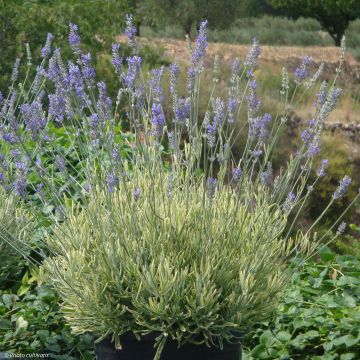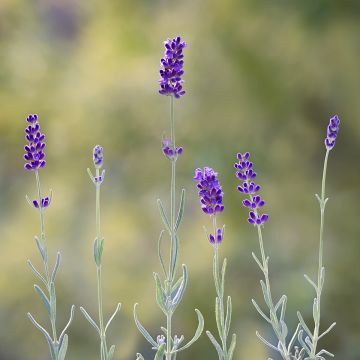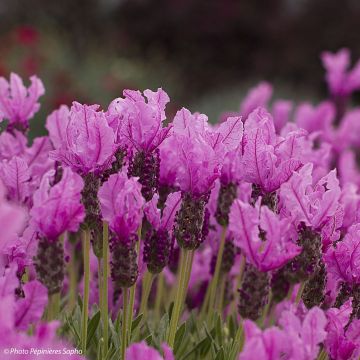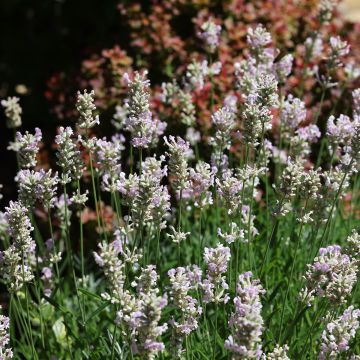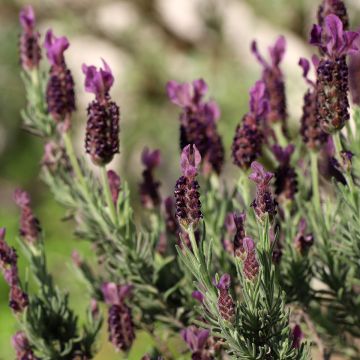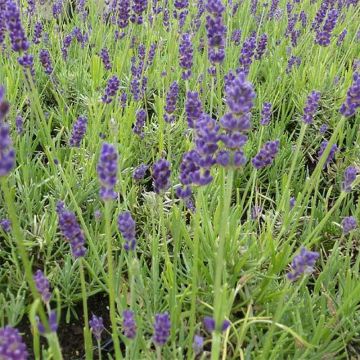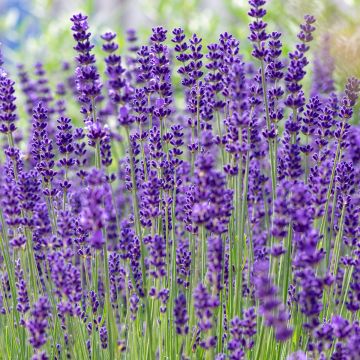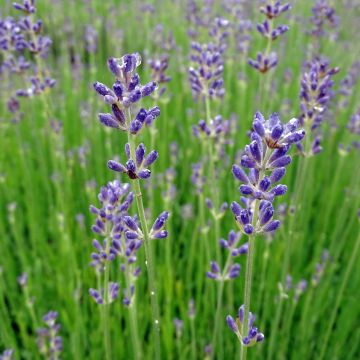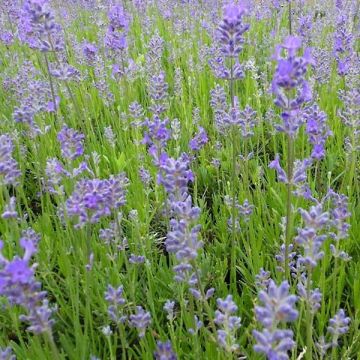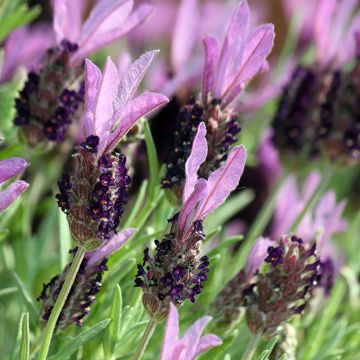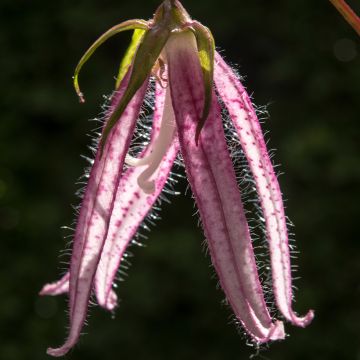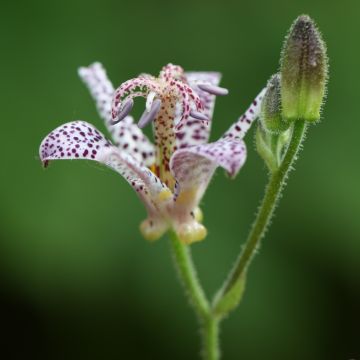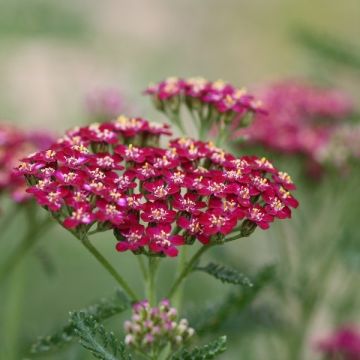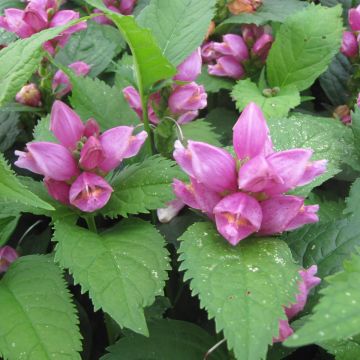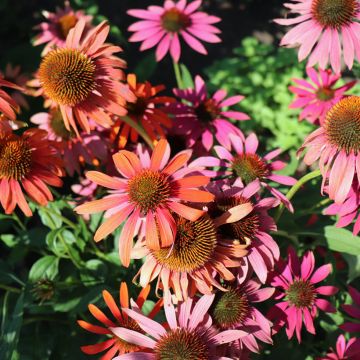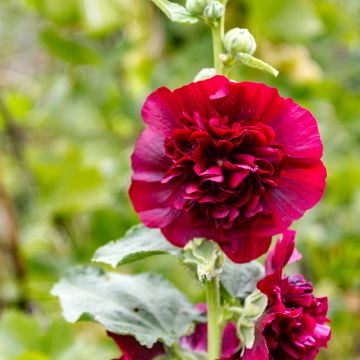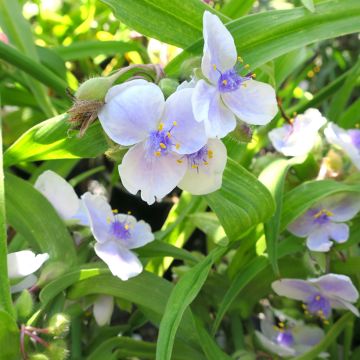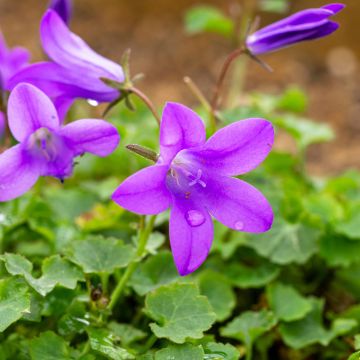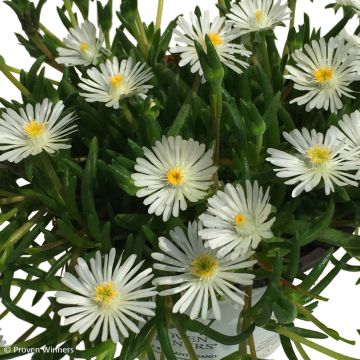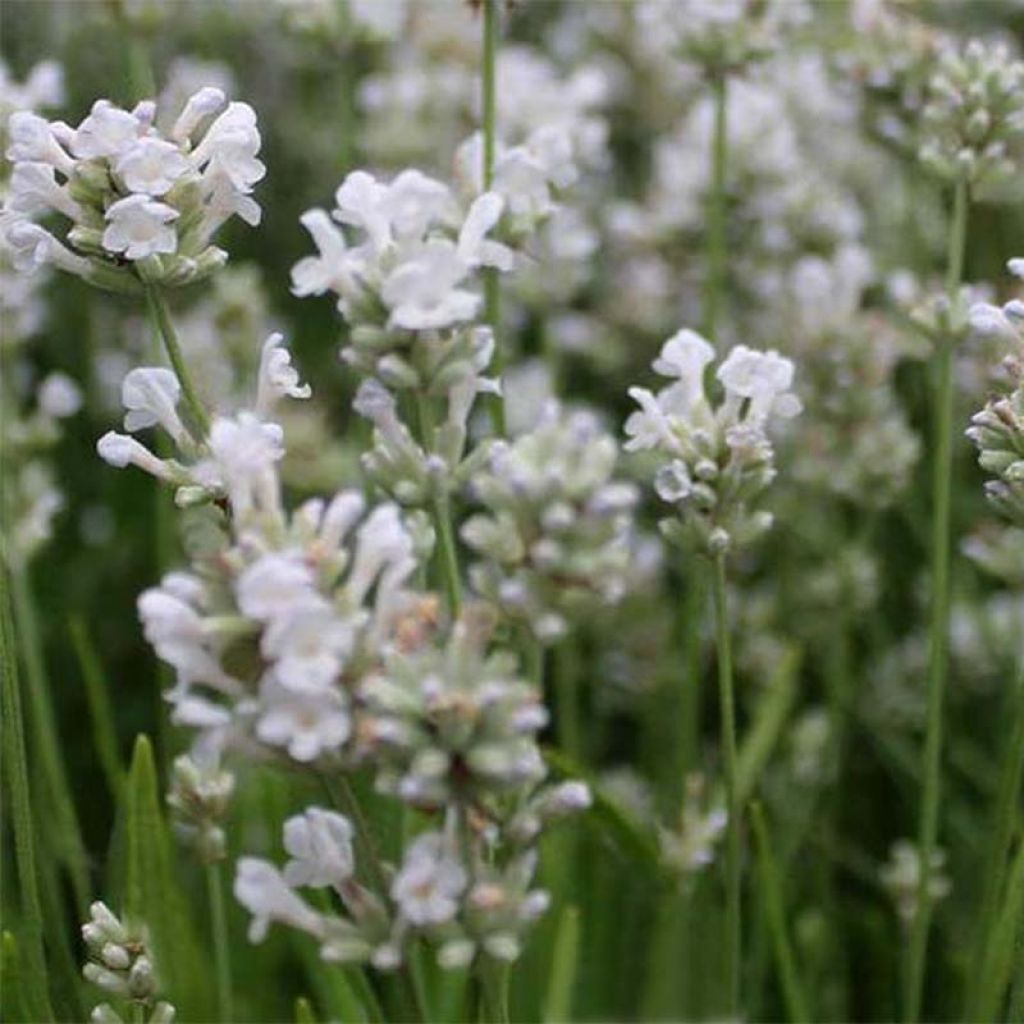

Lavandula angustifolia Arctic Snow - True Lavender
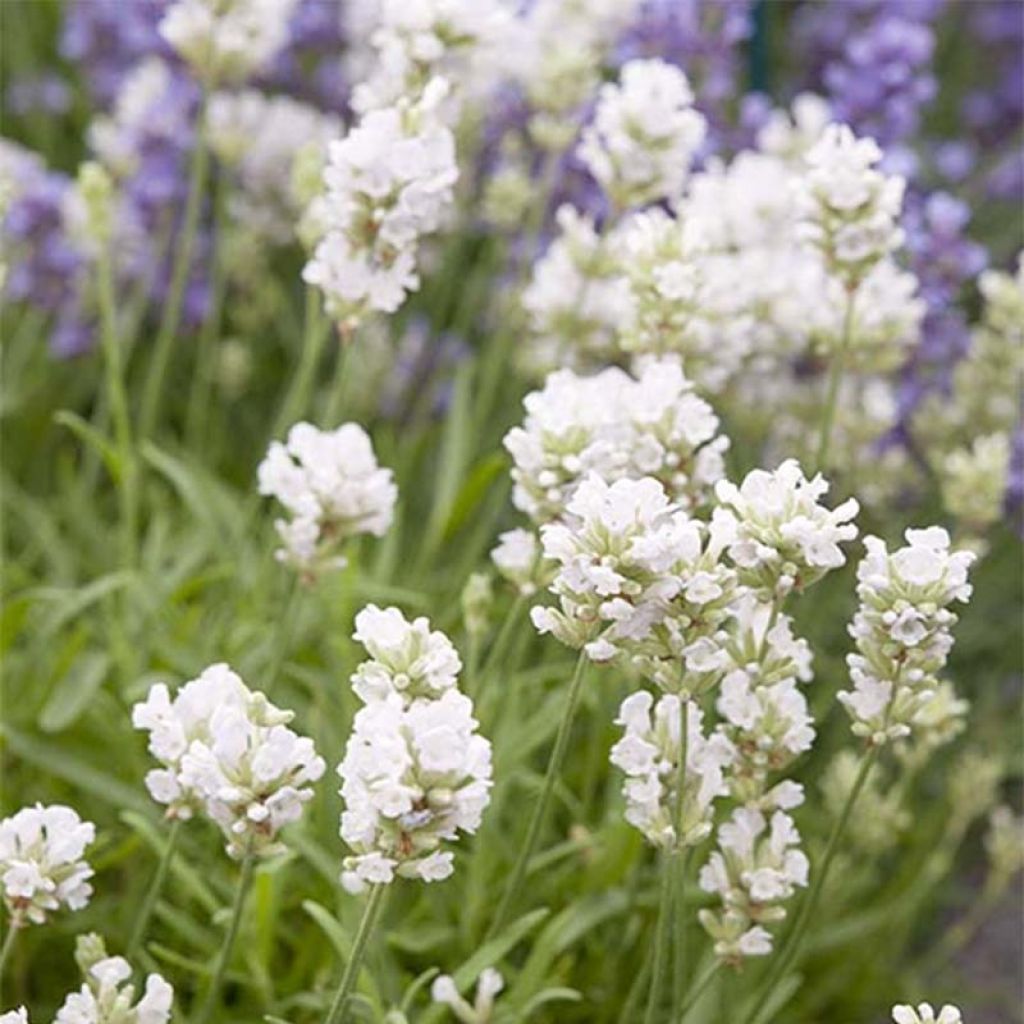

Lavandula angustifolia Arctic Snow - True Lavender
Lavandula angustifolia Arctic Snow - True Lavender
Lavandula angustifolia Arctic Snow
True Lavender, English lavender
This item cannot be shipped to the selected country
Delivery charge from €5.90
Delivery charge from €5.90
Delivery charge from €5.90
Delivery to Corse prohibited
More information
Schedule delivery date,
and select date in basket
This plant carries a 12 months recovery warranty
More information
We guarantee the quality of our plants for a full growing cycle, and will replace at our expense any plant that fails to recover under normal climatic and planting conditions.
From €5.90 for pickup delivery and €6.90 for home delivery
Express home delivery from €8.90.
From €5.90 for pickup delivery and €6.90 for home delivery
Express home delivery from €8.90.
From €5.90 for pickup delivery and €6.90 for home delivery
Express home delivery from €8.90.
Delivery to Corse prohibited: UE law prohibits the import of this plant from mainland France to Corse as part of the fight against Xylella fastidiosa. Please accept our sincere apologies.
More information
Does this plant fit my garden?
Set up your Plantfit profile →
Description
Lavandula angustifolia 'Arctic Snow' is a new variety of English lavender, also known as Lavender vera, which stands out for its abundant summer flowers which are a very pure white. Compact and dense, this low shrub transforms into a true ball of light, superb among darker plants. Its dense vegetation, as well as its flowers, are accompanied by an authentic lavender fragrance. Decorative in winter, its fine green-grey foliage will be even lighter and brighter if the summer is dry and hot. Give this beautiful lavender a very sunny exposure and perfectly drained soil in a rockery or gravel bed.
Lavandula angustifolia, sometimes called English lavender, is a plant in the Lamiaceae family, a relative of sage, thyme, and rosemary. This wild species is native to the Mediterranean mountains and is grown in Provence, where it is still cultivated for the production of essential oil. It is a plant that prefers calcareous and poor soils, and it appreciates rocky and stony areas. Its hardiness is good, around -15°C (5°F), but it requires very well-drained soil.
The 'Arctic Snow' variety, selected in England, forms a small bush, about 45 to 50 cm (18 to 20in) tall and 50-60 cm (20-24in) wide. Its habit is dense, the plant is vigorous and forms a lovely rounded bushy clump in a few years. Its foliage, decorative and evergreen in winter, is composed of small narrow leaves, which are highly aromatic. Their colour green-grey, appearing lighter in summer in dry soil, and covered with a thicker down to limit water loss through evapotranspiration. This phenomenon reflects the plant's adaptation to summer drought. In July-August, this lavender is covered with a multitude of small, very white, highly fragrant and nectar-rich flowers, tightly packed on short cylindrical spikes of 4 to 5 cm (2in), at the end of thin leafy woody stems.
With its graphic and wild appearance, the colour of its foliage and its pure white flowers, an infinity of possibilities are available to the gardener. Lavender 'Arctic Snow' can be associated with grasses like Stipa pennata or Stipa tenuifolia, which, with their tousled habit, will contrast with its rounded shape and create a harmonious and natural association. It will also work wonders when paired with evening primroses, perennial flaxes, asphodels, euphorbias, or dark shrubs like dwarf conifers and strawberry trees, or Tarentum myrtles. It blends well with Iris germanica, daylilies, and a small bindweed called Convolvulus althaeoides. You can also create beautiful pots to place on the patio or balcony to enjoy its fragrance. It is also possible to mix several varieties of lavender together, creating an elegant display with a variety of flower and foliage colours, as well as different plant sizes.
Properties: As lavender is a very nectar-rich plant, it contributes to the conservation of bees: the nectar from its flowers attracts bees, making some of the best honey. The plant can be distilled to obtain highly sought-after essential oil for perfume and aromatherapy. Its numerous therapeutic properties are still widely used: its essential oil has antiseptic, antispasmodic, healing, cleansing, diuretic, and other properties.
Report an error about the product description
Lavandula angustifolia Arctic Snow - True Lavender in pictures
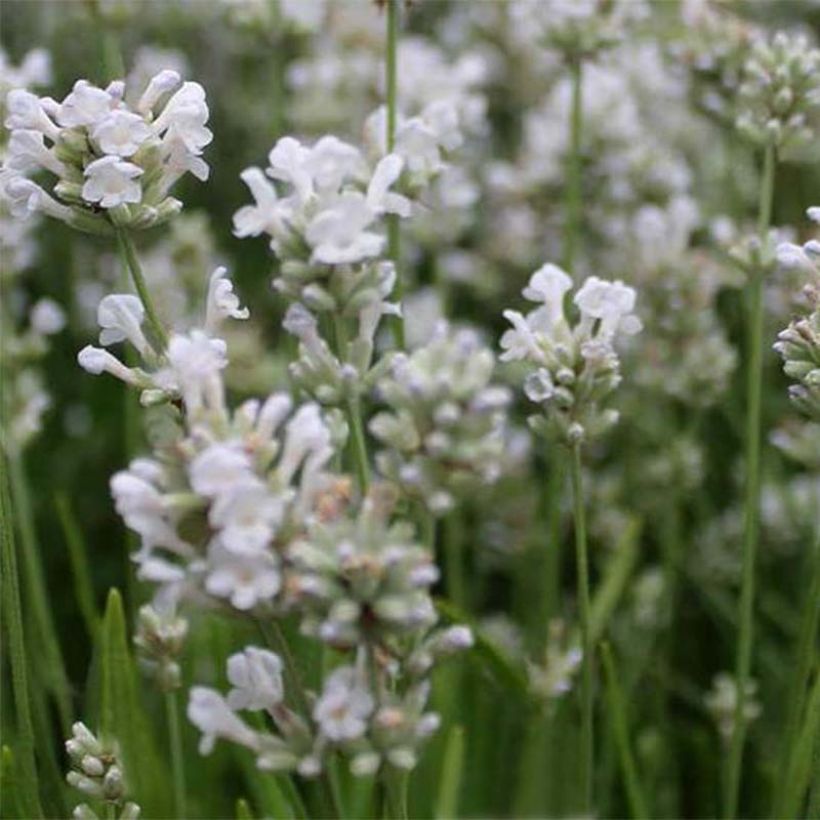

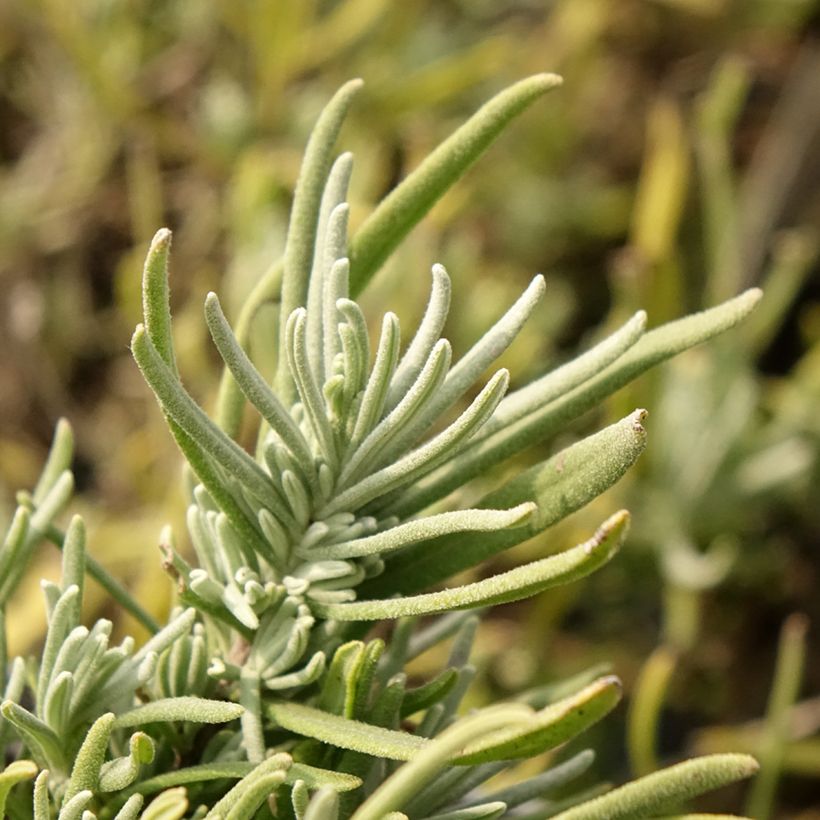

Flowering
Foliage
Plant habit
Botanical data
Lavandula
angustifolia
Arctic Snow
Lamiaceae
True Lavender, English lavender
Cultivar or hybrid
Other Lavendula - Lavender
Planting and care
In nature, lavenders always live in poor and stony, dry, perfectly drained environments, in full sun. These plants dislike summer rain, which makes them sick and causes them to disappear, as they are very sensitive to fungal diseases induced by the combination of heat and soil moisture. In winter, they require good drainage, and in summer, they need to be kept dry. Lavender will age better in poor soil, as its growth will be slower and it will have less tendency to become bare at the base. To limit this phenomenon, pruning should be carried out from a young age, after flowering or in autumn, just above the first buds that can be seen on the wood. Lavenders never regrow on old wood. The clump will thus branch out more and more, remaining compact, eventually forming beautiful round and dense cushions. When planting, provide them with what they like: gravel, stones, coarse sand, but definitely not potting soil, compost, or fertiliser!
.
Planting period
Intended location
Care
-
, onOrder confirmed
Reply from on Promesse de fleurs
Summer flowering perennials
Haven't found what you were looking for?
Hardiness is the lowest winter temperature a plant can endure without suffering serious damage or even dying. However, hardiness is affected by location (a sheltered area, such as a patio), protection (winter cover) and soil type (hardiness is improved by well-drained soil).

Photo Sharing Terms & Conditions
In order to encourage gardeners to interact and share their experiences, Promesse de fleurs offers various media enabling content to be uploaded onto its Site - in particular via the ‘Photo sharing’ module.
The User agrees to refrain from:
- Posting any content that is illegal, prejudicial, insulting, racist, inciteful to hatred, revisionist, contrary to public decency, that infringes on privacy or on the privacy rights of third parties, in particular the publicity rights of persons and goods, intellectual property rights, or the right to privacy.
- Submitting content on behalf of a third party;
- Impersonate the identity of a third party and/or publish any personal information about a third party;
In general, the User undertakes to refrain from any unethical behaviour.
All Content (in particular text, comments, files, images, photos, videos, creative works, etc.), which may be subject to property or intellectual property rights, image or other private rights, shall remain the property of the User, subject to the limited rights granted by the terms of the licence granted by Promesse de fleurs as stated below. Users are at liberty to publish or not to publish such Content on the Site, notably via the ‘Photo Sharing’ facility, and accept that this Content shall be made public and freely accessible, notably on the Internet.
Users further acknowledge, undertake to have ,and guarantee that they hold all necessary rights and permissions to publish such material on the Site, in particular with regard to the legislation in force pertaining to any privacy, property, intellectual property, image, or contractual rights, or rights of any other nature. By publishing such Content on the Site, Users acknowledge accepting full liability as publishers of the Content within the meaning of the law, and grant Promesse de fleurs, free of charge, an inclusive, worldwide licence for the said Content for the entire duration of its publication, including all reproduction, representation, up/downloading, displaying, performing, transmission, and storage rights.
Users also grant permission for their name to be linked to the Content and accept that this link may not always be made available.
By engaging in posting material, Users consent to their Content becoming automatically accessible on the Internet, in particular on other sites and/or blogs and/or web pages of the Promesse de fleurs site, including in particular social pages and the Promesse de fleurs catalogue.
Users may secure the removal of entrusted content free of charge by issuing a simple request via our contact form.
The flowering period indicated on our website applies to countries and regions located in USDA zone 8 (France, the United Kingdom, Ireland, the Netherlands, etc.)
It will vary according to where you live:
- In zones 9 to 10 (Italy, Spain, Greece, etc.), flowering will occur about 2 to 4 weeks earlier.
- In zones 6 to 7 (Germany, Poland, Slovenia, and lower mountainous regions), flowering will be delayed by 2 to 3 weeks.
- In zone 5 (Central Europe, Scandinavia), blooming will be delayed by 3 to 5 weeks.
In temperate climates, pruning of spring-flowering shrubs (forsythia, spireas, etc.) should be done just after flowering.
Pruning of summer-flowering shrubs (Indian Lilac, Perovskia, etc.) can be done in winter or spring.
In cold regions as well as with frost-sensitive plants, avoid pruning too early when severe frosts may still occur.
The planting period indicated on our website applies to countries and regions located in USDA zone 8 (France, United Kingdom, Ireland, Netherlands).
It will vary according to where you live:
- In Mediterranean zones (Marseille, Madrid, Milan, etc.), autumn and winter are the best planting periods.
- In continental zones (Strasbourg, Munich, Vienna, etc.), delay planting by 2 to 3 weeks in spring and bring it forward by 2 to 4 weeks in autumn.
- In mountainous regions (the Alps, Pyrenees, Carpathians, etc.), it is best to plant in late spring (May-June) or late summer (August-September).
The harvesting period indicated on our website applies to countries and regions in USDA zone 8 (France, England, Ireland, the Netherlands).
In colder areas (Scandinavia, Poland, Austria...) fruit and vegetable harvests are likely to be delayed by 3-4 weeks.
In warmer areas (Italy, Spain, Greece, etc.), harvesting will probably take place earlier, depending on weather conditions.
The sowing periods indicated on our website apply to countries and regions within USDA Zone 8 (France, UK, Ireland, Netherlands).
In colder areas (Scandinavia, Poland, Austria...), delay any outdoor sowing by 3-4 weeks, or sow under glass.
In warmer climes (Italy, Spain, Greece, etc.), bring outdoor sowing forward by a few weeks.

































